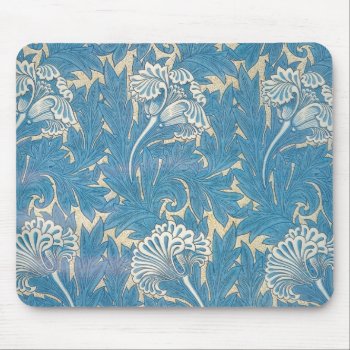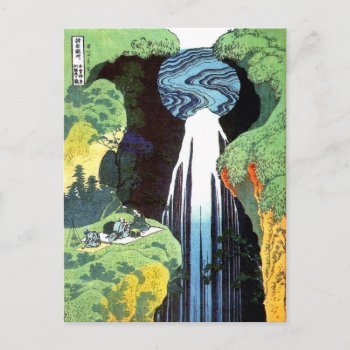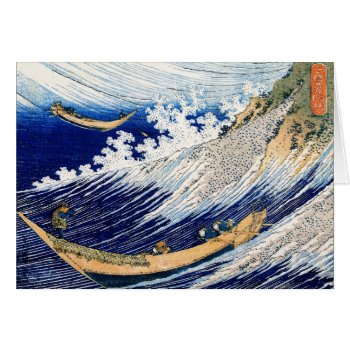Detail from “Morning in the Adirondacks” (19th century Foerster & Co. print archived at the Library of Congress). This image has been edited and cleaned up from the original archive, which was very dark and obscured. You may edit or delete the border if desired.
Continue reading
Tag Archives: printmaking
William Morris Tulip – Mousepad
William Morris, 1834-1896, was one of the most influential voices in Victorian art and architecture, and his influence spread far into the 20th century in the form of the Arts and Crafts Movement that he helped spawn.He was an English architect, furniture and textile designer, artist, writer and socialist associated with the ‘Pre-Raphaelite Brotherhood’ and the English “Arts and Crafts Movement’. Turquoise Blue leaves and elaborate turquoise blue and white Tulip flowers are the main focal point in this design. Behind the leaves and flowers is a pale beige background. This print was most likely a wallpaper print or textile print.
Continue reading
Japanese Art Hokusai Amida Waterfall Fine Art Post Card
Amida waterfall, fine art by Katsushika Hokusai.
Continue reading
Hokusai Ocean Waves Greeting Card
Ocean waves, fine art by Katsushika Hokusai. Small boats with people in them.
Continue reading
Hiroshige Moon Over Waterfall Fine Art iPad

歌川広重 Moon Over Waterfall, Utagawa Hiroshige Japanese art, 19th century Utagawa Hiroshige (1797 – October 12, 1858) was a Japanese ukiyo-e artist, and one of the last great artists in that tradition. He was born in 1797 and named "Ando Tokutaro" in the Yayosu barracks, just east of Edo Castle in the Yaesu area of Edo (present-day Tokyo). His father was Ando Gen'emon, a hereditary retainer (of the doshin rank) of the shogun. An official within the fire-fighting organization whose duty was to protect Edo Castle from fire, Gen'emon and his family, along with 30 other samurai, lived in one of the 10 barracks; although their salary of 60 koku marked them as a minor family, it was a stable position, and a very easy one — Professor Seiichiro Takahashi characterizes a fireman's duties as largely consisting of revelry. The 30 samurai officials of a barracks, including Gen'emon, oversaw the efforts of the 300 lower-class workers who also lived within the barracks. A few scraps of evidence indicate he was tutored by another fireman who taught him in the Chinese-influenced Kano school of painting. Legend has it that Hiroshige determined to become a ukiyo-e artist when he saw the prints of his near-contemporary, Hokusai. (Hokusai published some of his greatest prints, such as Thirty-six views of Mount Fuji, in 1832—the year Hiroshige devoted himself full-time to his art.) From then to Hokusai's death in 1849, their landscape works competed for the same customers. A waterfall, and behind it the full moon seen through the branches of a tree, its autumn leaves falling.
雪中虎図, 北斎 Tiger in the Snow, Hokusai Fridge Magnet
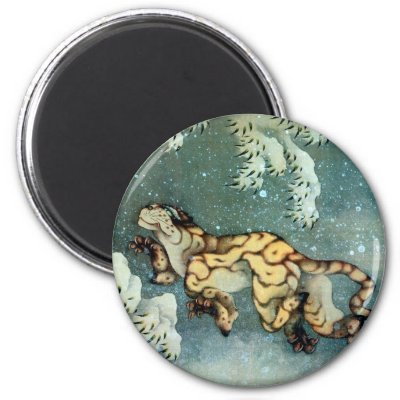
Katsushika Hokusai (October or November 1760 – May 10, 1849)was a Japanese artist, ukiyo-e painter and printmaker of the Edo period. In his time, he was Japan's leading expert on Chinese painting. Born in Edo (now Tokyo), Hokusai is best-known as author of the woodblock print series Thirty-six Views of Mount Fuji ( Fugaku Sanjūroku-kei c. 1831) which includes the internationally recognized print, The Great Wave off Kanagawa, created during the 1820s.
His influences also stretched to his contemporaries in nineteenth century Europe whose new style Art Nouveau, or Jugendstil in Germany, was influenced by him and by Japanese art in general. This was also part of the larger Impressionist movement, with similar themes to Hokusai appearing in Claude Monet andPierre-Auguste Renoir. Hermann Obrist's whiplash motif, or Peitschenhieb, which became seen to exemplify the new movement, is visibly influenced by Hokusai's work.
Continue reading
?
His influences also stretched to his contemporaries in nineteenth century Europe whose new style Art Nouveau, or Jugendstil in Germany, was influenced by him and by Japanese art in general. This was also part of the larger Impressionist movement, with similar themes to Hokusai appearing in Claude Monet andPierre-Auguste Renoir. Hermann Obrist's whiplash motif, or Peitschenhieb, which became seen to exemplify the new movement, is visibly influenced by Hokusai's work.  Posted in magnets
|
Tagged hokusai, japanese, magnets, printmaking, snow, tiger, ukiyoe, woodblock, 北斎, 浮世絵, 虎, 雪
Posted in magnets
|
Tagged hokusai, japanese, magnets, printmaking, snow, tiger, ukiyoe, woodblock, 北斎, 浮世絵, 虎, 雪
神奈川沖浪裏,北斎 Great Wave, Hokusai Tshirt

Katsushika Hokusai (October or November 1760 – May 10, 1849)was a Japanese artist, ukiyo-e painter and printmaker of the Edo period. In his time, he was Japan's leading expert on Chinese painting. Born in Edo (now Tokyo), Hokusai is best-known as author of the woodblock print series Thirty-six Views of Mount Fuji ( Fugaku Sanjūroku-kei c. 1831) which includes the internationally recognized print, The Great Wave off Kanagawa, created during the 1820s.
Continue reading Women Bathing, Torii Kiyonaga Postcard
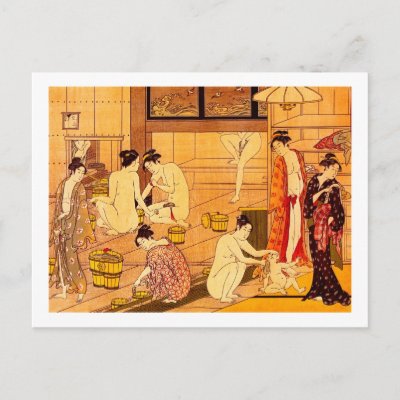
Torii Kiyonaga (1752 – June 28, 1815) was a Japanese ukiyo-e printmaker and painter of the Torii school. Originally Sekiguchi Shinsuke, the son of an Edo bookseller, he took on Torii Kiyonaga as an art-name. Although not biologically related to the Torii family, he became head of the group after the death of his adoptive father and teacher Torii Kiyomitsu.


